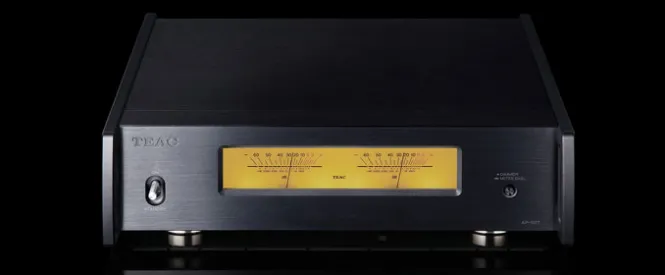Q Acoustics M40 HD Wireless Speaker System Review
Simon Lucas gets into the groove with this seriously capable, compact powered speaker package…
Q Acoustics
M40 HD Wireless Speaker System
£749
It may only have existed since 2006, but in comfortably less than twenty years, Q Acoustics has established an enviable reputation. Its budget-friendly passive speakers have been rapturously received, and its more expensive offerings have caused consternation among prestigious high-end brands. As for its active speaker systems, they have been innovative or highly cost-effective—or both.
2021's M20 HD wireless system is an excellent case in point. A versatile, affordable, high-resolution system contained in two standmounting speakers, it's been such a success that Q Acoustics is understandably eager to find out if lightning can strike twice. And so it has developed the M40 HD, which is also a wireless audio system with a stack of connectivity. It is bigger than its M20 HD sibling, albeit not as large as you might expect.
UP CLOSE
There's no denying that at 710x250x296mm [HxWxD], the M40 HD is a very compact design. I seem to recall that Celestion tried – and failed – to make titchy floorstanders a thing around the turn of the century, but Q Acoustics is nothing if not intrepid. It has decided that there's a significant minority of consumers who are unable or unwilling to allow their listening space to be dominated by speaker cabinets, let alone by a complete speaker-and-electronics package.
Just because these 'micro-towers' look like scale models of full-size floorstanding loudspeakers, don't imagine that Q Acoustics has paid less than full attention to the design. On the inside, the company's proprietary 'point-to-point' bracing technology has been deployed in an effort to make each cabinet as rigid and inert as possible. Each speaker features Helmholtz Pressure Equaliser technology to minimise standing waves. On the outside, the vinyl-wrapped MDF cabinet is smoothly and flawlessly built and can be found in walnut, black, or white finishes.
Each full-length grille is fixed in position and cannot be detached. This, reckons Q Acoustics, helps keep the structure of the grille to a minimum, especially around the drivers. This, in turn, means minimal disruption of sound dispersion patterns and a reduction in the reflections that can impact performance.
The driver complement comprises a 22mm decoupled soft-dome tweeter and two 125mm mid/bass units – at least, that's what Q Acoustics claims, and there's no way for me to be certain without prising the grilles off. The mid/bass driver is one of the company's innovative new Continuous Curved Cone (C³) designs that made its debut in last year's 5000 series. Here, as there, it attempts to combine the midrange fidelity and control of a flared cone with the bass performance of a straight one. The frequency response is said to be 38Hz to 22kHz, and the crossover frequency is 2.5kHz.
Naturally enough, in a system of this type and price, there are some fairly fundamental differences between the two speakers. One is simply as described above, with four floor spikes and a couple of stabilisers to help keep it stable. It has a reasonably large bass reflex port downwards to the bottom of the rear of its cabinet and a couple of speaker-binding posts. The other speaker, though, has quite a bit more going on.
This is what takes care of business. Below its bass reflex port is a panel where all the system's physical connections are positioned. They consist of analogue 3.5mm and stereo RCA sockets, digital optical and USB-B inputs, a figure-of-eight connection for mains power, and a subwoofer pre-out. There are speaker binding posts here, too – Q Acoustics supplies a reasonably generous length of cable with which to join both speakers together. The digital optical and USB-B inputs do the hi-res business; each can handle files of up to 24-bit/192kHz resolution.
This speaker also offers wireless connectivity – the M40 HD features Bluetooth 5.0 with SBC, AAC, aptX, aptX HD and aptX Adaptive codec compatibility. Unsurprisingly, the amplification necessary to drive the stereo pair is of the Class D type, and Q Acoustics rates it at 2x 100 watts if measured at peak power and 2x 50 watts RMS.
There's no Wi-Fi connectivity, which by extension means no control app. Yet there are operational options in the shape of a remote control handset and some physical controls embedded in the top of the boss loudspeaker. Between them, you can take care of 'power on/off', 'volume up/down/mute', input selection, Bluetooth pairing, and 'skip forwards/backwards'. Which is about as much as anyone will realistically require, right?
THE LISTENING
This is a high-resolution-capable system, but I'm not so dogmatic that I don't imagine most of its owners using it as a wireless system most of the time. This is why I start my listening with aptX-enhanced streams of Nothing But a Heartache by The Flirtations via Qobuz and Screaming Target by Big Youth via TIDAL. Although these are quite different recordings in terms of character and attitude, the M40 HD treats them both in the same even-handed and enthusiastic manner.
Rhythmic expression, for example, is confident and convincing. The Q Acoustics system pays pretty close attention to the attack and decay of low-frequency sounds, as well as loading them with plenty of detail, texture and intensity. As a result, it's a straight-edged listen that keeps momentum high. It hits hard – too hard, in fact, if you're careless enough to position those bass reflex ports hard against a rear surface – but is emphatically not a blunt instrument. The low end is deft and articulate and serves admirably as a foundation for everything that's going on above it.
The transition to the midrange is smooth, and the M40 HD keeps detail levels similarly high. Vocalists of all types and techniques are granted full expression and given plenty of elbow room in which to do their thing. There's good unity and togetherness to the system's presentation, but it keeps every element of even complex recordings at a sufficient distance from every other element to the point that individual strands are easy to follow. The directness and positivity with which the M40 HD handles the midrange means it communicates pretty explicitly.
There's a fair amount of attack at the top of the frequency range, too—although it's not quite as unequivocal as elsewhere. Treble sounds are certainly detailed and smoothly integrated into the rest of the frequency range, but the last scintilla of bite and drive is absent. Rolling off the top end in this manner probably makes sense in the context of the system overall. Yet it does mean that if you're careless with positioning, the frequency response might become just a little bottom-heavy.
Switching up to a 24-bit/192kHz FLAC of 100% Dundee by The Roots via the USB-B input further demonstrates the system's ability to unify a recording – even if, like this one, it's something of a cut'n'paste job. There's some well-supervised aggression to the way the M40 HD motors through the tune, hitting hard but never threatening to become unruly. There's more than enough dynamic headroom available to properly describe the shifts in volume and vehemence - and that's even more apparent when listening to Gershwin's Rhapsody in Blue, recorded in 1959 by the Columbia Symphony Orchestra under the swaggering direction of Leonard Bernstein. The distance the Q Acoustics can put between the solo piano and moments of full-on orchestral overload is considerable. And it is just as attentive to the harmonic variations in the accompanied piano passages that any number of similarly priced systems routinely let slip.
Anyone looking for complete neutrality of tone in their system will find the M40 HD just slightly on the warm side, I'd have thought. And that trait only becomes more pronounced with every centimetre closer to a rear wall you nudge the speakers. The low frequencies here are confident in the best circumstances but can become altogether too pleased with themselves if the system is carelessly positioned – where the result is more heat to the sound than is ideal. However, it's not too difficult to achieve a nigh-on ideal balance most of the time.
THE VERDICT
 'Convenience' ceased to be a dirty word in hi-fi circles some time ago, and Q Acoustics has long been on a mission to rehabilitate the word 'affordable' too. With the M40 HD, the company has combined convenience with affordability, added a hefty dose of performance, and manifested it in a compact package that's easy to live with and enjoy.
'Convenience' ceased to be a dirty word in hi-fi circles some time ago, and Q Acoustics has long been on a mission to rehabilitate the word 'affordable' too. With the M40 HD, the company has combined convenience with affordability, added a hefty dose of performance, and manifested it in a compact package that's easy to live with and enjoy.
Visit Q Acoustics for more information
Simon Lucas
Simon was editor of What Hi-Fi? magazine and website and has since written for Wired, Metro, the Guardian and Stuff, among many others. Should he find himself with a spare moment, Simon likes publishing and then quickly deleting tweets about the state of the nation (in general), the state of Aston Villa (in particular) and the state of his partner’s cat.
Posted in: Applause Awards | 2024 | Loudspeakers | Active | Floorstanding | Hi-Fi
JOIN IN THE DISCUSSION
Want to share your opinion or get advice from other enthusiasts? Then head into the Message
Forums where thousands of other enthusiasts are communicating on a daily basis.
CLICK HERE FOR FREE MEMBERSHIP
Trending
applause awards
Each time StereoNET reviews a product, it is considered for an Applause Award. Winning one marks it out as a design of great quality and distinction – a special product in its class, on the grounds of either performance, value for money, or usually both.
Applause Awards are personally issued by StereoNET’s global Editor-in-Chief, David Price – who has over three decades of experience reviewing hi-fi products at the highest level – after consulting with our senior editorial team. They are not automatically given with all reviews, nor can manufacturers purchase them.
The StereoNET editorial team includes some of the world’s most experienced and respected hi-fi journalists with a vast wealth of knowledge. Some have edited popular English language hi-fi magazines, and others have been senior contributors to famous audio journals stretching back to the late 1970s. And we also employ professional IT and home theatre specialists who work at the cutting edge of today’s technology.
We believe that no other online hi-fi and home cinema resource offers such expert knowledge, so when StereoNET gives an Applause Award, it is a trustworthy hallmark of quality. Receiving such an award is the prerequisite to becoming eligible for our annual Product of the Year awards, awarded only to the finest designs in their respective categories. Buyers of hi-fi, home cinema, and headphones can be sure that a StereoNET Applause Award winner is worthy of your most serious attention.





